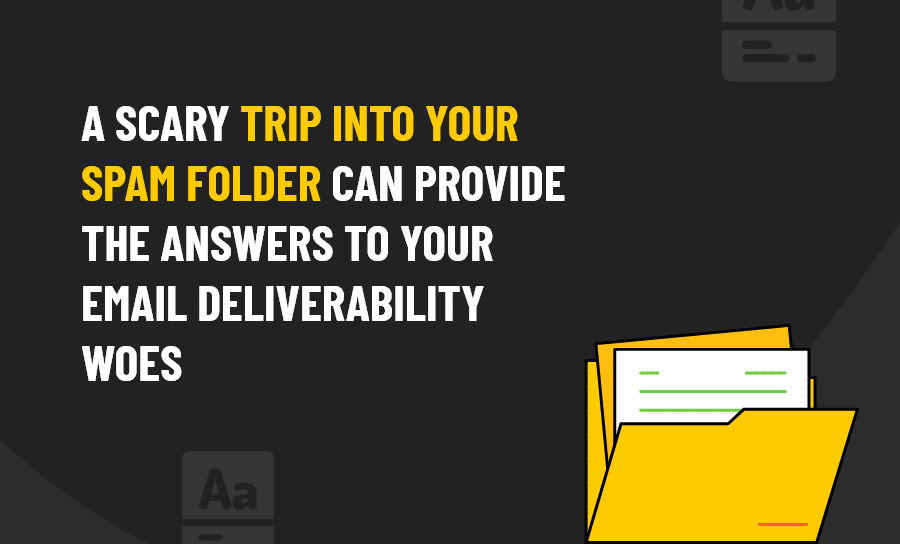THE GROWING REACH OF SPAM FILTERS
Most of the time, it’s not that hard to understand why a message has ended up in spam. They made use of known email subject line trigger ones, did not pass the authentication tests, were sending thin, sparse content that the spam filter decided was irrelevant, that kind of thing. Sometimes it may be a case of low domain reputation or an IP reputation that may cause the deliverability issue but those can be rectified with time and growth of your business.
But then there are others. Just today, a WordPress password reset and a Google Alert were both to be found in my spam folder. Legitimate emails I needed, lost in spam. And if they couldn’t make it past the spam filter, then that really is scary. So it’s not just a case of marketing emails getting the ban, it’s a bigger issue than we thought!
The fact is that overzealous spam filters result from those Nigerian prince emails. Over the last few years ISPs and webmail providers have seriously ramped up their efforts to weed out spam and the unfortunate side effect has been an increasing number of valid emails never making it to the in-box of their intended recipient. The bounce rate (the deliverability rate of an email) has increased.
We all also know what happens when your emails are flagged as spam. Every time it happens your sender reputation takes a hit, which means so does your deliverability and so your reputation score is damaged even further. It’s a vicious circle that can repeat ad nauseam.
AVOIDING THE SPAM FOLDER CYCLE
If best email practices as we understand them cannot ensure that your emails are given safe passage to inboxes then what can? The answer may lie in those spam folder emails themselves. By taking a closer look at them there are some valuable lessons to be learned.
NO SILVER BULLET HERE
- Drop the old “Hi {first name}” kind of personalization
- Make sure your emails give more than they take
- Be a real person reaching out to another person
- Get in the habit of asking questions rather than pitching ‘answers’.
DEAD EMAIL CONTACTS ARE MORE DANGEROUS THAN YOU THINK
I agree totally with Digital Marketer’s assertion that being aware of which email contacts to avoid is every bit as important as which contacts you should reach out to. Unmonitored, inactive email addresses can have a serious negative impact on your deliverability rates, especially if you keep sending messages to them. If you fill up a subscriber’s inbox, it won’t matter that they are inactive. It will be your sending volume that presents a deliverability problem.
How? As a part of their sender reputation, determination algorithms ISPs and email providers factor in mailbox usage rates, the ratio of active to inactive contacts on your mailing lists. The lower your mailbox usage, the worse your sender reputation. In fact, according to Return Path, low mailbox usage scores account for up to 19% of email deliverability issues.
The answer here is fairly simple; the regular practice of list hygiene through email verification. That means checking your lists regularly and purging the email addresses that can harm you, including all the following:
Invalid email addresses
Spam traps
Departmental or role-based email addresses
Unresponsive subscribers
YOUR REPUTATION IS YOUR BEST DEFENCE AGAINST THE SPAM FILTERS
In the eyes of every mailbox provider and ISP your sender reputation – not your company reputation – is one of the most crucial things that determine whether your emails make it to the in-box or get sent straight to the spam folder. That’s why improving email deliverability is almost synonymous with maintaining a high enough sender score. But how do you take care of your sender reputation?
We’ve already seen that most spam filters consider mailbox usage as a key signal in gauging sender reputation. Other factors include the volume of email send-outs, level of engagements your emails generate, and quality/relevance of your email content.
There’s a ton of helpful advice on ensuring high in-box placement rates out there – there is some particularly good stuff over on our co-founder Deepak’s personal website – but some aspects of sender reputation that are more important than others:
Always work with a reputable email service provider
Ensure that your IP has never been used – or will be used – for spam, by you or someone else)
Make sure that recipients can easily and reliably identify you as the sender
Segment by IP and sub-domain
EARN SOME REPUTATION CRED FROM YOUR RECIPIENTS
In the end, your best allies in the fight against spam filters may be your email recipients. They have the power to tip the balance in your favour by actively opening, clicking, and engaging your emails. They can also destroy your campaign by ignoring or (when push comes to shove) hitting the spam complaint button.
That’s why it’s essential for reaching excellent deliverability results that you not only offer relevant emails but provide a compelling email experience as well.
If you’re considering hiring a cold email agency to build a cold email strategy that works, let us know! Let’s have a chat about how our cold email services can help you.






